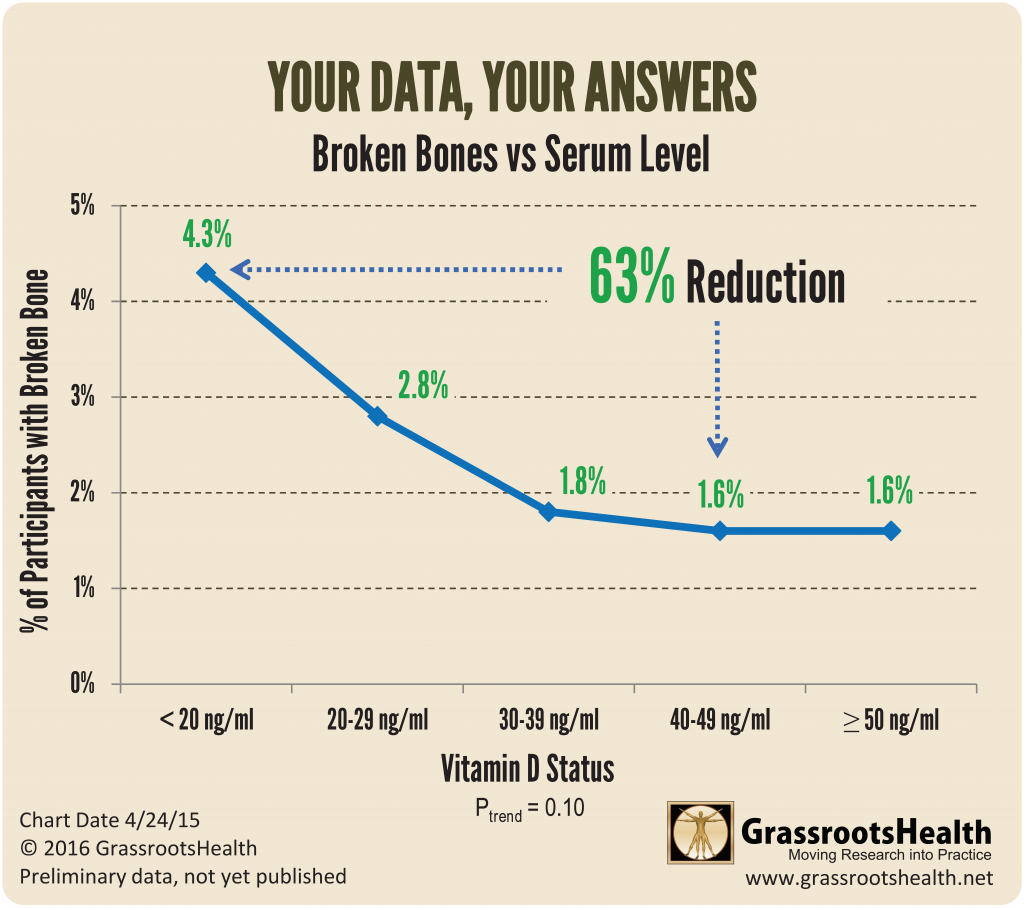
Vitamin D plays a large part in overall bone health and bone strength, and optimizing vitamin D status can increase bone strength and help prevent a break. The analysis referenced above was limited to participants aged 65 years and older (17% of all participants, N=1659) since that age group is most likely to experience the effects of bone health. Within this group, 2% experienced a broken bone in the 6 months prior to their first test. Of those who broke a bone, the average number of breaks was one and the most common bones were in the feet and hands. The most common reasons were falling, tripping and running into furniture/wall.
When comparing vitamin D serum levels to the incidence of broken bones:
- Those who broke a bone were more likely to have a serum level <40 ng/ml than ≥40 ng/ml.
- Those with serum levels <20 ng/ml had 3 times the risk of breaking a bone compared to those ≥40 ng/ml.
Note:
Calcium, vitamin D, protein and magnesium are several co-factors that work together to maintain strong and healthy bones. When any or all nutrients are below the optimal level, bone status is impaired at the level of the lowest – the most limited nutrient. Because vitamin D deficiency is so prevalent, it is often the nutrient leading to bone status impairment. However, if one were to focus on optimizing vitamin D, without also optimizing Ca, protein, Mg, or one of the other important co-factors, no change in bone status would be observed, leading to a false conclusion that vitamin D does not affect bone status.
Because the nutrients interact in the maintenance of bone health, the effects of a single nutrient may be overlooked if intake of others is not sufficient.
Chart Date 4/24/15
© 2016 GrassrootsHealth
Preliminary data, not yet published
